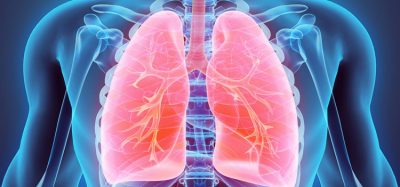Making ATMPs a reality for rare disease patients
Posted: 28 February 2024 | Paolo Morgese (Alliance for Regenerative Medicine) | No comments yet
Advanced therapy medicinal products (ATMPs) will be among the first to undergo joint clinical assessments at EU level in 2025 and these will form the basis for national value assessments and pricing negotiations. Here, Paolo Morgese from the Alliance for Regenerative Medicine discusses how methodologies for joint clinical assessments (JCAs) will be critical to support innovation in this field and enable patient access.


The implementation of the EU’s Health Technology Assessment Regulation (HTAR)1 will play a key role in shaping the patient access pathway for ATMPs such as cell and gene therapies. This is a great opportunity for healthcare systems in Europe to benefit from the latest therapeutic innovations which can offer life-changing outcomes to those suffering from debilitating conditions. However, for this ambition to be realised, it is vital that we get the fundamental methodologies, processes and national implementation right from the start.
Innovation needed to help rare disease patients
The European Commission defines a rare disease as one that affects fewer than one in 2,000 people, and in recognising up to 8,000 such conditions, it estimates that there are around 30 million people living with a rare disease in the EU.2 That is a significant number of people for whom a cell or gene therapy may mean the difference between life or death.
Laying the groundwork for EU-wide health technology assessments
One key outcome of the HTAR could be to accelerate patient access to new therapies by formalising an EU-level clinical assessment process. Starting in 2025, health technology assessment (HTA) experts from across Europe will join forces to produce joint clinical assessment (JCA) reports, which will be used to support national health economic assessments as well as inform pricing and reimbursement discussions. This will be particularly beneficial for smaller EU Member States with less established HTA bodies, who often experience significant delays in the reimbursement of novel therapies.


The European Commission estimates that there are around 30 million people living with a rare disease in the EU
To co-ordinate the process, the HTAR foresaw the need to set up an HTA Coordination Group (HTACG) made up of national representatives mainly from HTA bodies.3 An HTA Stakeholder Network, which includes patient associations, consumer organisations, non-governmental health organisations, associations of health technology developers and health professionals’ organisations4 has also been set up to ‘facilitate dialogue between stakeholder organisations and the HTACG’ and to support the HTACG and its subgroups when needed. This group now has the challenge of developing methodologies to assess the relative clinical effectiveness of a new therapy.
Cell and gene therapies require a new approach to evidence-gathering
ATMPs differ from traditional medicines in several ways and so their analysis methods must also differ. Currently, these therapies primarily target rare or ultra-rare diseases with small patient populations, which therefore limits clinical study sizes. They primarily treat conditions with high unmet needs that have no viable alternative treatment and limited opportunity for medical intervention. The invasiveness and methods of administration of ATMPs make the blinding of studies unfeasible.
Randomised control trials (RCTs) are seen as the gold standard for traditional pharmaceuticals, but they may not be suitable for the development of ATMPs, which typically receive marketing authorisation based on clinical datasets that are smaller and less mature than those for more traditional therapies. As such, RCTs should not be seen as the only benchmark for rare disease therapies as the cohort of eligible patients may be very small and the severity of a condition can mean that is not ethical to give some trial participants a placebo.
A more flexible approach is needed. As an alternative, single-arm trials are often medically, scientifically and ethically necessary to assess the efficacy of ATMPs. Rare diseases can advance rapidly and leave only a small timeframe for medical intervention, and there are often no alternative treatments. Comparing single-arm trial results to a synthetic comparator from a robust disease registry can provide evidence of clinical benefit, while gathering real-world evidence (RWE) after therapeutic approval can demonstrate durable efficacy.
Application of HTA in EU Member States
While discussions on the methodologies and implementation of the HTAR continue, we must consider that the findings of a JCA at the EU level will influence decisions at a country level. Any inconclusive JCA outcome will necessitate – when possible – new analyses of clinical data in each Member State, leading at best to a duplication of effort and consequently a delay in therapy availability.
Ultimately, it is for the benefit of patients that HTA regulations must be practicable.
JCA reports must provide Member States with all the appropriate information to have the best possible starting point for discussions with ATMP developers on access. For these biotech companies, evidence requirements from HTA bodies must be realistic and feasible. Otherwise, we will see a significant decrease in investment in ATMP research and development and commercialisation in Europe.
To achieve the EU’s ambition to centralise and streamline expertise on clinical assessments, it is vital to avoid duplication of work across Member States. This is particularly important for smaller EU Member States that might lack sufficient resources to reconduct the full assessments.
Ultimately, it is for the benefit of patients that HTA regulations must be practicable. For this reason, the Alliance for Regenerative Medicine is pleased to be part of the HTA Stakeholder Network to put forth the views of our on how ATMPs should be assessed and made available.
Collaboration leads to progress
The prospect of ATMPs offering potentially curative treatments for rare diseases is truly revolutionary. New regulations must embrace emerging technologies that push the boundaries of what is possible and optimise the use of novel therapies. The EU has an opportunity to harness R&D expertise in biotechnology and take advantage of the pipeline of promising therapies in Europe.
To make these therapies a reality for patients, there needs to be greater collaboration between biotech companies, legislators, assessment authorities, healthcare systems and patient groups. We are on the path to modernisation and we all have a responsibility to make the route as smooth as possible.
Paolo Morgese
Paolo is an expert in patient access, healthcare policy and investment with more than 20 years of experience in assessing and supporting access to innovative healthcare technologies. Before joining the Alliance for Regenerative Medicine in 2017, Paolo worked for five years at Deerfield Management, a healthcare investment company. Prior to that, he worked at Merck Serono, Kyphon (now known as Medtronic) and spent several years with the Italian HTA agency Agenas. Paolo’s expertise is centred on cell and gene therapy value assessment, healthcare system modernisation and financing healthcare innovation.
References
- Regulation on Health Technology Assessment. [Internet] European Commission. 2023. [cited 2023Oct]. Available from: https://health.ec.europa.eu/health-technology-assessment/regulation-health-technology-assessment_en
- Rare diseases EU research on rare diseases. [Internet] European Commission. [cited2023Oct]. Available from: https://research-and-innovation.ec.europa.eu/research-area/health/rare-diseases_en
- HTACG. [Internet] European Commission. 2023. [cited 2023Oct]. Available from: https://health.ec.europa.eu/health-technology-assessment/regulation-health-technology-assessment/member-state-coordination-group-hta-htacg_en
- Health Technology Assessment Stakeholder Network – list of members. [Internet] EC. 2023. [cited 2023Oct]. Available from: https://health.ec.europa.eu/latest-updates/health-technology-assessment-stakeholder-network-list-members-2023-05-05_en
Related topics
Related organisations
Alliance for Regenerative Medicine (ARM), European Commission (EC), HTA Coordination Group (HTACG)









